Trudy J. Morgan-Cole's Blog, page 31
January 8, 2022
The Disordered Cosmos, by Chanda Prescod-Weinstein

For the first 1/4 to 1/3 of this audiobook I understood almost nothing of what I was listening to, although I enjoyed it. That’s because physicist Chanda Prescod-Weinstein is talking about physics, and even though this is physics broken down for the lay person, most of it went over my head. I do enjoy hearing people talk about physics; it’s fasincating, but I can’t really retain a lot of it.
However, the book goes on from there to talk about Prescod-Weinstein’s own experiences as a Black woman in the field of astrophysics — where she is a rarity. She directly attacks the idea that science can or should be “apolitical” and points out the ways in which, both in the past and the present, the practice of science has supported racism and sexism — as well as they ways in which this can and should change. I really enjoyed and learned a lot from the personal, historical, and sociological aspects of this book, even if the scientific parts mostly sailed over my head.
Cloud Cuckoo Land, by Anthony Doerr
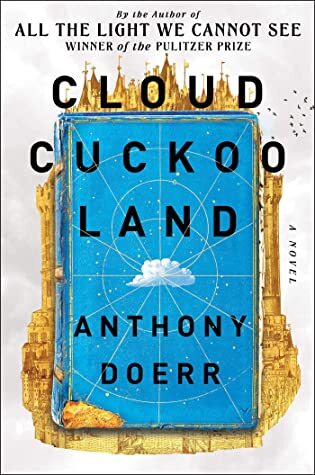
The first novel I read in 2022 was a Christmas gift, and an absolutely beautiful and absorbing book to start the year with. I’ve categorized it as General Fiction and Historical Fiction and Sci-Fi, because it’s a book of many stories and many genres. In true Anthony Doerr fashion, you can trust the disparate storylines to weave together at the end, but the beauty of the journey is the best part.
One storyline contains the fall of Constantinople in 1453, told from two perspectives: Anna, a young orphaned girl inside the city, and Omeir, a young oxen-driver conscripted into the ranks of the attackers. Another thread of the novel tells the story of Zeno Ninis, who begins life as a lonely child in mid 20th-century middle America, signs up for the Korean War and spends time in a POW camp, then in later life turns to translating ancient Greek texts and, almost by accident, teaching an obscure Greek story to a group of children in a library in February 2020.
Weaving into Zeno’s story and intersecting with it in a tragic way is the story of a teenaged boy who grows up in the same American town where Zeno lives as an old man. Seymour is the highly sensitive, neurodiverse son of a poor single mom. The only place Seymour is comfortable is in the woods behind their trailer, and when the natural beauty he relies on is devastated by a housing development, his discomfort with humanity blossoms into hatred and he is lured into a shadowy world of eco-terrorism.
The final thread of the story is the tale of Konstance, a young girl in the twenty-second century living aboard a multi-generational ship of refugees leaving earth to plant life on a new planet. As she grows up, Konstance has to grapple with the reality that the great project she is part of will not be realized in her lifetime — she will live and die aboard this ship in hope that her great-grandchildren may be settlers on a hospitable planet. Even more unsettling is the realization that not everything aboard the ship is what it seems to be.
Tying these stories together is an ancient Greek manuscript, lost for many years, rediscovered, translated, passed down and recreated — the tale of a fool who tries to reach a magical city in the clouds and is turned into various animals along the way. It’s a silly tale, but the ways in which the old manuscript intersects with each character’s story is a golden thread running through the novel.
One reviewer whose reviews I normally like and agree with found the book slow and ponderous and felt that the theme of “stories matter” was pounded home relentlessly. I obviously did not find it slow — I could hardly put it down — and while there definitely is an ongoing message that stories matter, the theme that came through for me was: how do humans cope with the end of the world? Each of these characters is, in some way, facing what appears to be the end of their world – and in the contemporary and future sections, the end of the actual world due to human-caused climate disasters is an ongoing theme. Faced with the loss of everything, how do we carry on? What does it mean to be human in these circumstances? I found this book to be a very engaging reflection on these questions.
January 2, 2022
My Favourite Books of 2021

This is not exactly ground-breaking news, but I read a lot of books this year. I get different totals by look at my Goodreads account, my Pinterest page, and this blog, because I don’t always remember to record every book in every case, so for a year-end total I’m going with the Pinterest board, because it gives such a good visual at-a-glance of books read and is pretty. So I’m going to say I read 113 books this year.
I usually do a quick break-down of a few stats about my reading — fiction vs non-fiction, gender/demographics of writers etc. This year I read 93 novels and 20 non-fiction books. I don’t break books down by format, but I will not that most of the non-fiction I read is via audiobook, which takes a little longer per book but allows me to get through more total books as I can now “read” while washing the dishes, driving, or walking the dog, three activities that don’t combine well with traditional eye-based reading formats. Although I read (as I always do) far more fiction than non-fiction, there were some real stand-outs in my non-fiction reads this year, to the extent that I decided to do a Top Ten of Fiction and a Top Five of Non-Fiction. That means a quarter of the non-fiction I read made it onto my favourites list this year. I still find “ears for non-fiction, eyes for fiction” is a rule that works well for how my brain processes information, but everyone is different. Most of my fiction reading is via e-book, unless it’s a re-read of an old favourite I own a copy of, or a paper book someone has given or loaned me.
Another predictable trend is that my reading still tends to favour women writers over men, this time by a larger margin than usual — 20 books by men, 92 by women, and one by multiple authors (I’m not aware of any non-binary authors I read this year unless there’s one I missed). However, one of my ten favourite novels and three of my favourite non-fiction books were written by men, who tend to be over-represented in my year-end favourites list every year simply because I’m much less likely to pick up a book by a male writer unless I already know something good about the writer or the book, so the ones I read tend to be stellar picks, whereas I’m more likely to take a chance on any old foolishness written by a writer who identifies as female. Again, just how my brain is wired.
Regular readers of this blog also know that several years ago I started making a concerted effort to seek out more books by Black, Indigenous, Asian, Latina and other authors who don’t primarily identiy as “white people.” This can be hard to define, but I find that it generally means that while 75-80% of the books I read still end up being written by white, English-speaking writers from the US, the UK, and Canada, at least I get a little more diversity in my mental diet when I make the effor to seek out other writers. This year I counted 26 books by racialized writers in my list.
My Top Ten Novels of 2021 (with links to my reviews, and with a sneak bonus book) were, in the order I read them in:
Miss Benson’s Beetle, by Rachel JoyceThe Girl With the Louding Voice, by Abi DareGirl, Woman, Other, by Bernardine EvaristoTales from Lindford, by Catherine FoxOne Last Stop, by Casey McQuistonA Thousand Ships, by Natalie HaynesThe Final Revival of Opal and Nev, by Dawnie WaltonA Psalm for the Wild-Built, by Becky Chambers. Also I’m sneaking in a recommendation for Chambers’ other books, her Wayfarers series, especially A Closed and Common Orbit, which would have been on the list if I’d decided to do a Top 11 instead of a Top 10 novel list for some reason.The Invisible Life of Addie LaRue, by V.E. SchwabThe Lincoln Highway, by Amor TowlesMy Top Five Non-Fiction Books of 2021, again in chronological order of when I read them
The Anthropocene Reviewed, by John GreenHow the Word is Passed, by Clint Smith IIIWait for God to Notice, by Sari FordhamDid Ye Hear Mammy Died?, by Seamus O’ReillyThe non-fiction list was tough, because I didn’t have quite enough for another Top Ten but too many for a Top Five, and I do like nice round numbers. Two others I really wanted to include were Between Two Kingdoms by Suleika Jaouad, and No Cure for Being Human by Kate Bowler. So I guess I really had a Top Seven non-fiction books. But I chose to knock those two off the official list because they’re extremely well-known and well-publicized bestsellers, like 4/5 of my final list, and I really wanted to give a spot to the brilliant Wait for God to Notice, a smaller-press book by a less-known author that deserves to be more widely read.
That’s my year in books, folks! What did you read and love this year? Any of these? Any others you’d highly recommend?
December 29, 2021
The Lincoln Highway, by Amor Towles
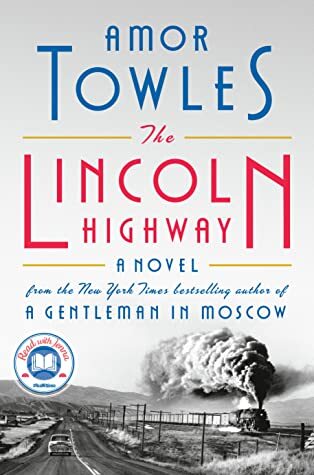
Like many avid readers I know, I read and enjoyed Amor Towles’s A Gentleman in Moscow. I’ve heard people say that, for them, The Lincoln Highway doesn’t live up to that earlier book, but my experience was completely different. While A Gentleman took me awhile to get into, I was hooked from the first page of The Lincoln Highway, couldn’t put it down, and read it in a little over one day. For me this novel was a completely immersive, engaging, sometimes heart-breaking experience, and although it’s almost certainly going to be the last novel I read in 2021, I think it will have a place on my Best Books of the Year list.
The story begins in Nebraska in 1954, where young Emmett Watson has just been released from a juvenile detention work camp to deal with his father’s death, the foreclosure on their farm, and the care of his nine-year-old brother Billy. Unknown to Emmett, two of his fellow inmates, the enterprising young con man Duchess and the dreamy Woolly, have stowed away and escaped along with him. While Emmett and Billy have a plan to drive west along the Lincoln Highway to California to start a new life, Duchess and Woolly (well, mostly Duchess) have a different plan that involve the same car and the same highway, but a completely different direction. Meanwhile, the girl next door, Sally, who has been helping to care for Billy while Emmett was incarcerated, has plans of her own that may or may not involve Emmett.
This story starts out like it’s going to be a road trip adventure, and it partly is, but once everyone gets to New York City (which, you’ll probably notice, is on the other side of the country from California), the action stays there for the rest of the book. Still, the novel has the feel of a quest or an adventure story, a motif underlined by Billy’s fascination with a book he carries that tells the tales of great adventurers from history and mythology. It’s told in multiple points of view, every character with a completely unique and distinctive voice. I fell in love with each and every character, even knowing that in doing so I’d get my heart at least a little bit broken by the end of the story, because you can tell going in this is not the kind of adventure where everyone will make it out unscathed. I loved, loved, loved this book and recommend it very highly.
December 27, 2021
Truth of the Divine, by Lindsay Ellis
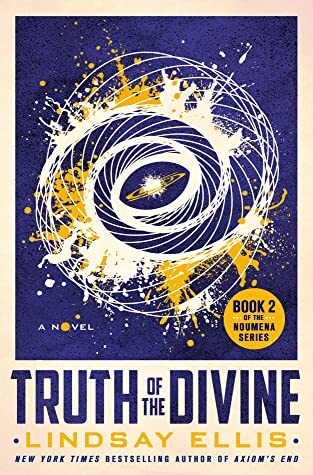
When I read Lindsay Ellis’s book Axiom’s End, I described it as “an engaging and unusual first contact story, and it’s set up for a sequel, so I’ll be interested to see where Ellis takes this story.” This is the sequel, and even after reading it I’m still not entirely sure how I feel.
The main character, as in the first book, is Cora Sabino, a 21 year old American girl who is the daughter of shadow alien-truther/whistleblower Nils Ortega. Cora is the only human able to communicate with the being she calls Ampersand, one of a group of aliens known as “amygdalenes” who have appeared on earth. Cora, who is joined in this novel by a second narrator Kaveh, a journalist who also becomes a love interest for her, becomes caught up in the web of government, FBI, CIA, anti-alien protestors — and, of course, the aliens themselves, who have their own priorities which may not align with those of humans.
I found the first 2/3 of this book very slow and then got kind of hooked as the pace picked up in the last third. However, I can’t say I ever really loved it — a lot of the alien stuff confused me and neither the human nor the alien characters deeply engaged me (except for one and I was not happy with how things worked out for that character). I was under the impression this was going to be a two book series, and if it is, it ended in the bleakest way imaginable, which would make me like it even less. But I’ve heard suggestions that Ellis is writing a third, and if it’s a trilogy, she may yet manage to say something more hopeful and meaningful about human/alien relations. Right now, though, it’s giving me that feeling of despair I get from a lot of futuristic sci fi (although this is set in an alternate-timeline 2007/2008), so I’m not sure I want to continue. It is still a really intriguing take on the idea of first contact; I’m just not sure it’s fully working for me.
December 14, 2021
Dark Water, by J.S. Cook
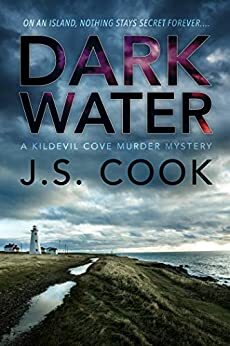
After finishing the entire Shetland series of mystery novels and looking for something with a similar flavour, it was a natural choice to pick up the first in the Kildevil Cove series by local author J.S. Cook. I know from social media that Cook, like me, is a big fan of those Shetland books, and this series definitely has a similar feel, with the rocky and remote island in question being Newfoundland.
Danny Quirke is a police officer currently suspended from the force while an investigation is ongoing into the death of a suspect he was apprehending. He returns to the remote community where he was raised to attend his grandfather’s funeral, only to encounter his estranged best friend, wealthy businessman Taigh Heaney. There’s a lot of tension between these two old friends … and some of it is definitely sexual tension.
This novel, as the first in a series, is putting a lot of pieces in place and establishing a lot of things about the characters, their relationships, and the backdrop against which their story plays out. With so much happening, there’s not the single clear “whodunit” storyline you might expect from a mystery novel, but rather a lot of murky secrets from the past reaching their fingers into Danny’s and Taigh’s present-day lives. Mysteries are confronted and solved, but there’s no resolution as simple as “the butler did it” — rather a complicated tapestry of motives, some of which leave tantalizing threads that will hopefully be woven into the subsequent novels in the series.
No Cure For Being Human, by Kate Bowler
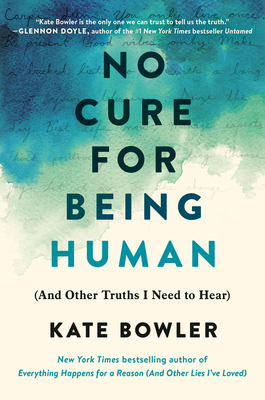
If you’ve read Kate Bowler’s Everything Happens For a Reason (And Other Lies I’ve Loved), or if you’ve listened to her fabulous Everything Happens podcast, you know what your’e getting with her second memoir. No Cure for Being Human contains more dispatches from the frontlines of life as a young, previously healthy person with Stage 4 cancer; more stories of tests, treatment, and terminally inspiring Christians trying to look on the bright side; more scathing critiques of both secular self-help culture and prosperity-gospel Christians. More moments, in other words, of Kate Bowler unflinchingly showing us that life is both wonderful and terrible, whether you have cancer or not. Thanks to experimental treatments, Kate Bowler has already had more years than she was initially given when she first got her diagnosis, and in addition to cherishing every extra day she gets to spend with her small son, she is using her time on this earth to share the message that there is no easy, spiritual, quick cure for the human condition. We are all here muddling through, hopefully helping rather than hindering each other in the journey. The world is blessed by every additional year of life Kate Bowler gets, and I love reading her books.
The Strangers, by Katharena Vermette
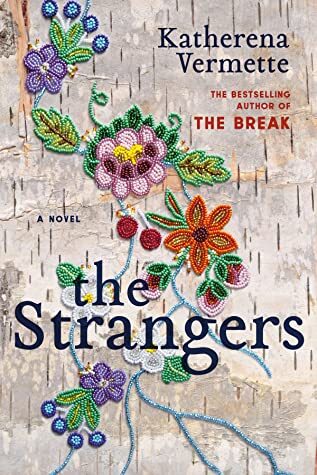
The Strangers is described as a “companion novel” to Vermette’s brilliant novel The Break. I totally missed the connection because it had been awhile since I read The Break and I didn’t recognize the name of the character who is a crossover between the two books. However, they are not so closely intertwined that each doesn’t work perfectly well on its own. Both novels are complex, thoughtful and vividly wrought family sagas depicting the lives of Metis families in contemporary western Canada.
The titular Stranger family is at the heart of this novel — Elsie, who struggles with addiction and mental illness, and her two estranged daughters. Phoenix is incarcerated; Cedar Sage is living with her dad and stepmom and trying to carve out a better life for herself. Then there’s Elsie’s mother, Margaret, who seems self-absorbed and uncaring — but she has her own backstory, and when you understand a bit more about what Margaret’s been through, you may not forgive her, but you can at least understand her. The Strangers offers a compelling portrait of an unforgettable family and a deep insight into contemporary urban Metis life.
Shetland Series, by Ann Cleeves
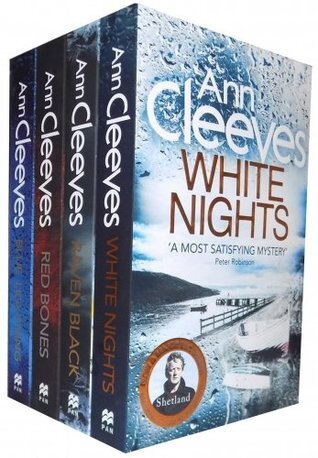
One way and another, Ann Cleeves’ Shetland series of detective novels has consumed a fair bit of my time this fall. First there was the highly-acclaimed BBC TV series, recommended to me by almost everyone I know, which proved to be every bit as addictive as people promised it would be once Jason and I got into watching it. When we’d seen all the TV Shetland currently available (we still can’t get the newest season here on any service we currently have), I decided to try the novels they were based on.
It’s opposite to how I usually approach a book and a TV/movie adaptation: normally I read the book first and then I’m disappointed that the adaptation is not “true” to the books. Coming at it the other way around was interesting: the actor, Douglas Henshall, is the “real” Jimmy Perez in my head, even though Cleeves’ physical description of her detective is very different from the actor’s appearance. He’s essentially the same man, otherwise, but his backstory is also quite different in the books from the movies — his love life, family life, etc, all unfolds in significantly different ways in the TV adaptation. The mysteries themselves are different also — some were written specifically for the TV series, but even in the case of the books that were adapted for TV, there are major changes to victims, killers, motives, etc.
The constant elements between the book series and the TV series, and the things that make them both good, though different, are, first of all, the character of the quiet, introspective, diffident, empathetic police detective, Jimmy Perez; secondly, the landscape and culture of Scotland’s Shetland Islands. These novels have a strong sense of place which is beautifully developed, and is of course enhanced by the visuals of the TV series. I enjoyed reading the eight novels and watching the five (so far) series of the TV show … but don’t expect one to be a faithful reproduction of the other!
The Reading List, by Sara Nisha Adams
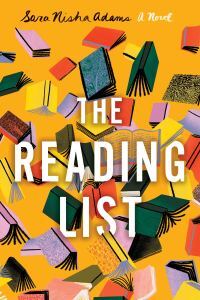
I’m always a sucker for fiction about books. Often such bookstores are set in and around bookstores — there’s a whole trend of that lately — but The Reading List instead is set against the backdrop of a small neighbourhood library in London, a little-used branch that’s threatened with closure.
Through the medium of a mysterious book list that keeps showing up on random slips of paper around the community, this book brings together two unlikely friends — Mukesh, and elderly widower whose late wife was a great reader but who’s never gotten into books himself, and Aleisha, a teenage girl reluctantly working part-time at the library her older brother loves but she’s indifferent to. Around these two, and their shared reading list, circles a constellation of other characters — Mukesh’s and Aleisha’s families, each with their own challenges, and the other library patrons, including several who encounter the same booklist and begin their own reading journeys.
This was a lovely little book with a touching exploration of how books can help, hurt, and heal. The very important subplot about Aleisha’s family felt a little underdeveloped to me … or perhaps developed in an unsatisfying way? Or maybe I just didn’t like what happened in that storyline. But overall I really enjoyed reading this book.



